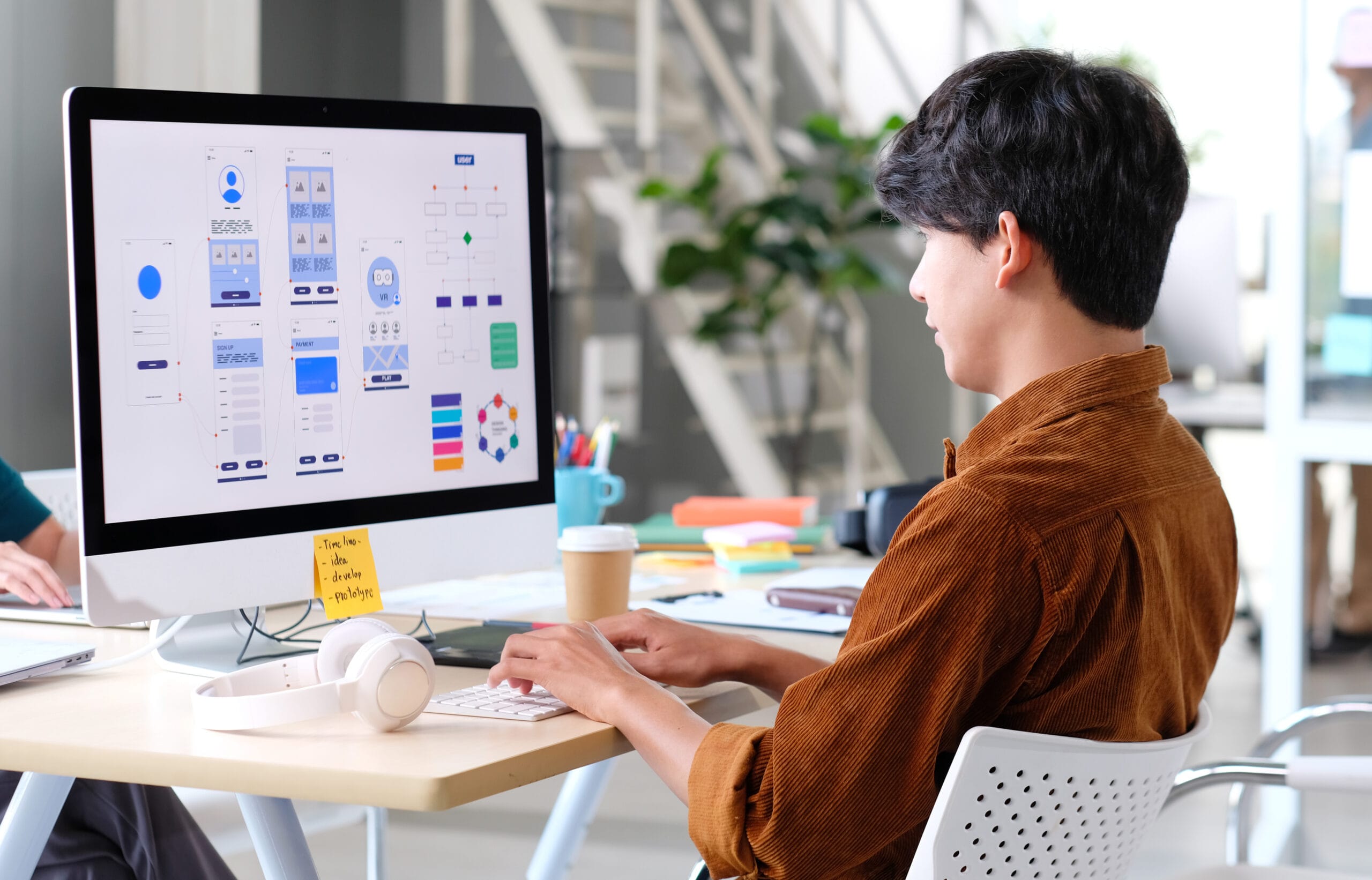Uncovering the Uses of Web Design for Enhancing Individual Experience
Web design considerably influences individual experience across digital platforms. By concentrating on user requirements, developers develop sites that are not just visually enticing however likewise useful and easily accessible. Crucial element such as responsive style and user-friendly navigating play critical roles in boosting usability. The challenge lies in understanding exactly how these parts interact to fulfill progressing customer assumptions. The expedition of these aspects exposes understandings that can change digital engagement.
Comprehending Individual Requirements and Expectations
How can Web designers efficiently align their productions with user needs and assumptions? To accomplish this, designers have to engage in comprehensive user research study to catch the preferences, behaviors, and pain factors of their target market. Using methods such as surveys, meetings, and functionality testing, developers collect valuable understandings that direct their decision-making process.
Producing individual personas can additionally help in picturing various individual sectors, making sure that design selections resonate with actual users. Furthermore, developers must focus on intuitive navigation and clear phone calls to action, which facilitate smooth interactions.
The Relevance of Responsive Design
As customers increasingly access web sites on a range of devices, receptive design has actually come to be essential for creating a positive individual experience. This strategy allows website to adapt seamlessly to different screen dimensions, guaranteeing that material is conveniently legible and navigable, no matter of whether a customer gets on a desktop computer, tablet computer, or smart device.
Receptive layout boosts functionality by supplying a regular experience, decreasing the demand for excessive scrolling or zooming. Additionally, search engines favor responsive sites, which can improve a website's exposure and reach. This style technique likewise enhances development initiatives, as it removes the demand for numerous versions of a site customized to details tools.
Incorporating responsive layout not only fulfills individual assumptions however likewise aligns with contemporary Web standards, cultivating involvement and complete satisfaction. Ultimately, it represents a commitment to accessibility and inclusivity, crucial components for any effective on the internet presence.
Developing Instinctive Navigation
A reliable website design not just encompasses receptive designs but likewise prioritizes instinctive navigation, which is vital for guiding customers with a web site perfectly. User-friendly navigating warranties that users can easily locate details without unnecessary initiative. Crucial element consist of a clear food selection structure, logical classification of web content, and well-known symbols or labels.
Uniformity in navigating placement across various web pages fosters familiarity, improving user comfort. Using breadcrumb routes permits customers to track their place within the website, helping in backtracking and expedition. On top of that, maximizing navigating for mobile phones is basic, as numerous users gain access to sites via mobile phones and tablets.
Incorporating a search bar can furthermore enhance the user experience, enabling fast accessibility to certain material. In general, user-friendly navigating minimizes stress, motivates longer website brows through, and ultimately results in greater customer complete satisfaction and interaction. By concentrating on navigating layout, Web developers can greatly enhance the general individual experience.
Using Visual Hierarchy Efficiently
Reliable website design hinges on the critical use aesthetic power structure, guaranteeing that individuals can effortlessly browse content and grasp the most important info at a glance. By focusing on components based on their importance, developers can lead individuals' attention towards important locations, such as headlines, calls-to-action, and essential images.
Techniques such as size, comparison, placement, and color play crucial roles in establishing this pecking order. Larger message often symbolizes greater relevance, while contrasting colors can draw interest to essential activities. Additionally, consistent alignment and spacing assistance create an arranged format, making it simpler for individuals to process information swiftly.
Incorporating images purposefully can enhance understanding and retention of web content. When utilized efficiently, a well-defined aesthetic pecking order not only boosts usability however additionally enriches the total user experience, allowing individuals to involve meaningfully with the internet site's objectives.
Enhancing Readability and Access
Aesthetic pecking order significantly influences just how users interact with a website, but equally essential is guaranteeing that content remains easily accessible and understandable to all target markets. Efficient Web design uses clear typography, consisting of proper font sizes, line spacing, and comparison to improve readability. Using high-contrast shade schemes can help those with aesthetic impairments, while bigger message dimensions profit users with reading troubles. Additionally, including alt text for photos guarantees that individuals using screen readers can access vital details.
Developers ought to additionally take into consideration the design and structure of material, making use of headings and bullet points to separate large blocks of text. This not only aids skimming click over here yet likewise aids users with cognitive handicaps. Ultimately, prioritizing readability and ease of access promotes a comprehensive environment, permitting diverse audiences to engage fully with the website's content (branding). By addressing these aspects, Web designers can considerably improve the general individual experience
Integrating Involving Visual Elements
Incorporating interesting visual components is important for improving user experience in Web layout. Color psychology plays a substantial function in influencing individuals' emotions and behaviors, while interactive graphics can catch attention and motivate expedition. Together, these aspects develop an extra attractive and dynamic on the internet setting.
Significance of Color Psychology
The value of shade psychology in website design can not be overemphasized, as it plays a vital function in shaping customer assumptions and actions. Colors evoke emotions and can affect how users interact with a site. Blue typically shares depend on and professionalism, making it a preferred selection for monetary organizations. On the other hand, red can activate necessity and enjoyment, typically utilized in sales promos. Understanding the psychological results of shade makes it possible for designers to create a cohesive aesthetic experience that reverberates with individuals. Additionally, regular color design enhance brand identity and recognition, ensuring individuals connect particular colors with specific brands. Inevitably, thoughtful application of shade psychology can greatly improve user involvement and fulfillment, making it an essential element of effective website design.
Making Use Of Interactive Graphics
Engaging customers through interactive graphics can significantly boost their overall experience on a website. These aspects, such as computer animations, infographics, and clickable visuals, cultivate a much deeper link between users and the material. By encouraging expedition and engagement, interactive graphics can make intricate details extra absorbable and maintain users' attention longer. In addition, they supply a chance for customers to connect with the website in a significant way, leading to increased satisfaction and a greater possibility of returning. However, it is important to balance interactivity with use; overly complex graphics may confuse individuals. Properly applied, interactive graphics can transform an easy viewing experience right into an appealing trip, eventually adding to enhanced customer experience and website performance.
Constant Examining and Improvement Methods
Constant screening and improvement methods act as vital components in enhancing website design for user experience. By applying iterative screening, designers can gather real-time feedback on individual communications, permitting them to identify discomfort points and areas for improvement - web development. A/B testing, functionality screening, and heat mapping work techniques that offer insights right into customer habits, enabling educated style choices
In addition, these strategies encourage a culture of continuous refinement, instead of an one-time launch. Web developers can make use of analytics tools to keep an eye on efficiency metrics, such as bounce prices and conversion prices, which assist necessary changes. Routine updates based upon customer responses not just improve performance however likewise foster customer complete satisfaction look at this website and commitment.
Inevitably, continual screening and enhancement develop a receptive website design setting where individual experience is prioritized, making sure that the website progresses together with individual requirements and technical improvements. This positive approach results in a more efficient and appealing on the internet presence.
Regularly Asked Inquiries
Exactly How Can Color Psychology Influence Customer Experience in Website Design?
Shade psychology substantially influences user experience in website design by evoking emotions and leading actions. Different colors can develop associations, enhance readability, and influence individual engagement, inevitably forming understandings of a brand name or web site's capability.
What Duty Does Typography Play in Individual Involvement?
Typography substantially influences individual interaction by boosting readability, establishing power structure, and conveying brand character. Effective font style selections can capture interest, stimulate emotions, and overview customers via web content, eventually boosting total communication and contentment with the web site.

Just How Do Social Differences Affect Web Design Preferences?
Social distinctions considerably influence Web style preferences, impacting color selections, design, images, and navigation discover here designs. Comprehending these variations permits designers to produce more relatable and engaging experiences customized to diverse individual backgrounds and expectations.

What Tools Can Assist Examination User Experience Effectively?
Numerous tools, consisting of Google Analytics, Hotjar, and UsabilityHub, successfully examination user experience. These platforms provide insights right into customer actions, facilitate A/B testing, and collect feedback, aiding designers make educated decisions to improve total usability.
How Frequently Should a Website Be Revamped for Optimum Customer Experience?
A site needs to be redesigned every 2 to 3 years to preserve ideal individual experience. Normal updates assure the style remains modern, responsive, and straightened with evolving customer needs and technical innovations, enhancing overall interaction.
Developing customer personas can better assist in picturing various individual sectors, making certain that style selections reverberate with actual individuals. As individuals significantly accessibility websites on a range of tools, receptive layout has actually become crucial for creating a positive user experience. Incorporating engaging aesthetic elements is crucial for enhancing customer experience in Web layout. Ultimately, continuous screening and renovation develop a receptive Web design setting where customer experience is focused on, making certain that the website progresses together with individual needs and technical innovations. Shade psychology substantially affects individual experience in Web style by guiding and stimulating feelings habits.